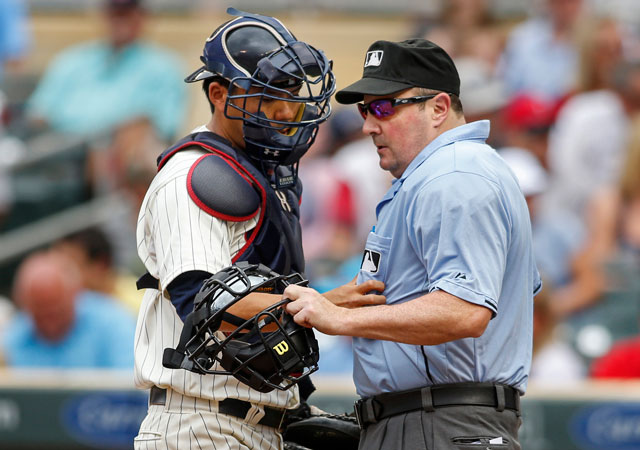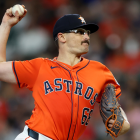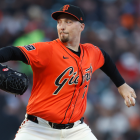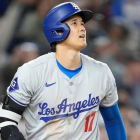Pitch framing: The art of a catcher trying to turn a ball into a called strike. Catchers have been doing it ever since umpires began setting up behind them, but not until recently have statisticians started to find success in measuring pitch framing, or in quantifying its value. Major-league teams find the information valuable. There's money in pitch framing if you're good at it.
Twins catcher Kurt Suzuki says he does not believe in pitch framing statistics that rank him, typically, as a below-average receiver. You wouldn't like it, either, if a computer readout told you that you stunk at part of your job. But no matter how Suzuki himself is ranked, he's not wrong to be circumspect, because pitch framing remains a work in progress, like other components of advanced defensive metrics.
We already use tools such as PITCHf/x to measure how accurate an umpire's strike zone is. The next step, some hope, is computers someday replacing plate umpires altogether. Others don't like "the human element" being removed. Suzuki is one of the humanists, but to an extreme. He defies credibility when trying to defend how umpires call balls and strikes to reporter Mike Berardino of the St. Paul (Minn.) Pioneer Press:
"I think you earn your stripes," Suzuki said. "I think as a rookie, you shouldn't get the same calls as a Torii Hunter or a Joe Mauer. Guys like Torii and Joe, they shouldn't have that borderline pitch called on them. It's that respect factor. That's just how it should be."
In recent years, the strike zone isn't just skewing significantly lower. It's also becoming identity-blind.
"It really puts the umpires in a tough position," Suzuki said. "They have that box they have to (adhere to), and I know a lot of them don't like that box. They're getting graded on it so they've got to do what they have to do. For the most part, I have a really good relationship with all of them. They tell me and they talk to me about it."
It's easy to believe he and the umpires are chatting. Suzuki, reputed by computers to be below-average at framing pitches, is chummy with umpires who don't like their work being critiqued by computers. There's safety in numbers, so to speak. Suzuki isn't alone in his assessment of how balls and strikes are called. Studies show that All-Stars get more favorable calls than non-All-Stars. And there's such a thing as a "rookie strike zone."
But shouldn't a strike be a strike? A ball a ball? Why not be as accurate as possible? It's one thing for an umpire to give, say, Frank Thomas, the benefit of a borderline call because he knows the difference between a ball and a strike. It's another to give the borderline call to, say, Jeff Francoeur, because he's been in the league for 10 years and it's taken him 5,200 plate appearances to draw 250 walks.
There is something inherently valuable in what Suzuki is saying: Human strike-zone judges are basically guessing up there. Computers won't guess. One thing that electronic umpires would do: Pitch framing would become obsolete. Although, you have to figure that next-generation A.J. Pierzynski will try to find a way to fool the computer, too.
It also should be noted: The pitch-framing data on Suzuki in 2015 is much better than it's been in recent seasons. He's working on getting better at it, to his credit.
The concept of a robot umpire calling balls and strikes might not be so far-fetched anymore.
"It's getting a little ridiculous now," Suzuki said. "It's getting a little out of control."
Just as long as we never have robot catchers.





















